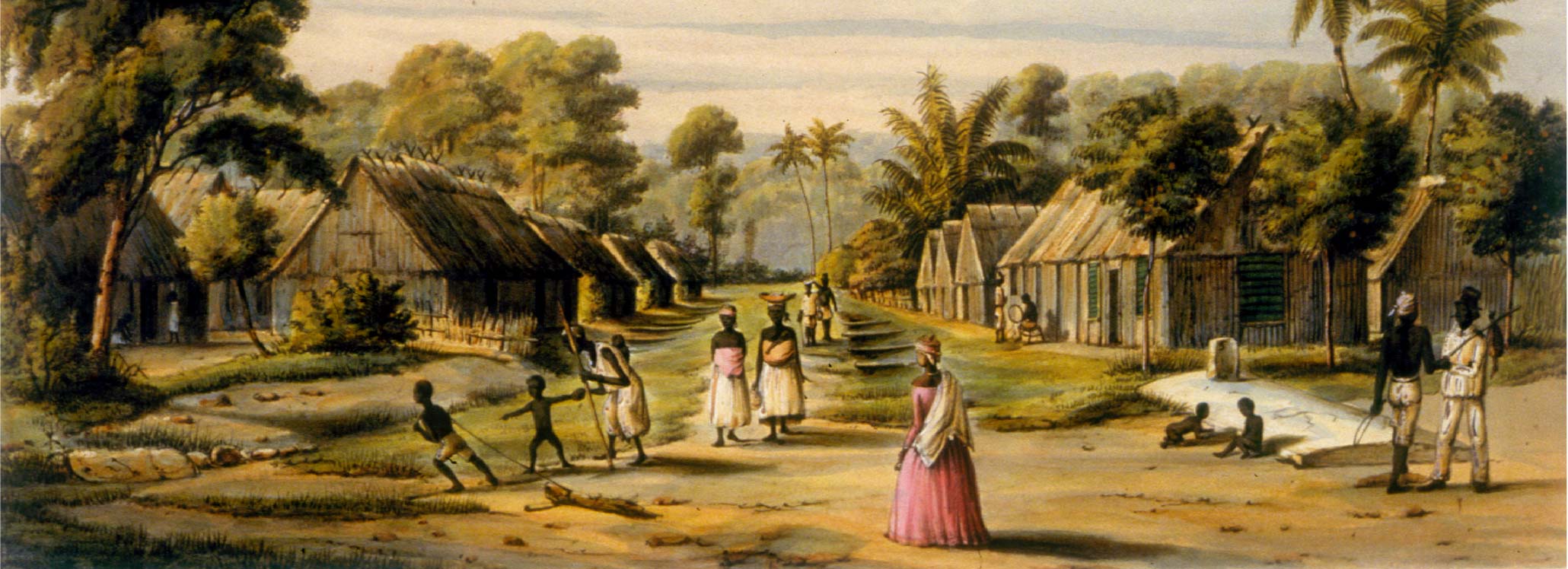Amador led a major slave revolt in 1595 on the island of São Tomé that came close to overthrowing Portuguese colonial authority. Amador’s date of birth is unknown, but he was born on São Tomé.
São Tomé was uninhabited when the Portuguese arrived on the island around 1471. Beginning in 1493, Portuguese colonists established sugarcane plantations on the island. To work on these plantations, the Portuguese brought slaves from nearby parts of Africa. Over the course of the sixteenth century, sugar became dominant throughout São Tomé. However, slaves on the island did not passively accept their fate. They frequently ran away, establishing maroon communities in nearby mountainous forests. From these communities, they attacked plantations and the town of São Tomé. In response, Portuguese authorities created a militia to fight these runaway slave communities and protect the European settlers. During the late sixteenth century, the sugar industry in São Tomé became less important with the rise of sugar production in Brazil. Divisions between the governor, the bishop, and the town council created political instability.
Amador took advantage of political tension to lead his revolt. On July 9, 1595, Amador and two other slaves, Lazaro and Domingo, led a group of slaves into the parish church in the town of Trindade and killed Portuguese men attending Catholic Mass. In the following days, an increasing number of slaves attacked plantations and burned sugar mills and plantation houses. On July 11, the militia and rebels fought again, resulting in the death of three Portuguese. Another battle followed on July 14, and the slaves fled. Amador proclaimed himself the king of São Tomé, and organized his runaway slave army into four units. Each unit attacked a key area of the town of São Tomér, but the Portuguese militia pushed the slaves back.
Amador’s army continued to attack the town for the next two weeks. With an army reportedly containing five thousand slaves, Amador waged one last assault on the town on July 28. Over two hundred soldiers died during this assault, including Lazaro, one of Amador’s commanders. The Portuguese governor offered clemency to any slave who surrendered, and more than four thousand accepted his offer on July 29.
Eventually, one of Amador’s confidantes betrayed him and Amador was arrested. On August 14, 1595, the Portuguese hung and quartered Amador and placed his heart on a pillow. Amador’s slave revolt was one of the greatest slave uprisings in Atlantic history. His army had destroyed most of the island’s sugar mills, and accelerated the movement of plantations away from São Tomé to Brazil before its eventual overthrow.
After São Tomé and the neighboring island of Príncipe gained independence in 1975, the government proclaimed Amador a national hero of the anti-colonial struggle. In 1976, the São Tomé and Príncipe government replaced the Portuguese escudo with a new currency, the dobra, and incorporated Amador’s portrait in the country’s currency. No images of Amador exist so a local artist created a portrait of him. In 2004, the National Assembly of São Tomé declared January 4 a national holiday in honor of Amador, and United Nations Secretary-General Kofi Annan inaugurated a statue of Amador in São Tomé.
Read the full, original biography by Gerhard Seibert in the The Dictionary of African Biography
Online Resources
Gerhard Seibert, “Rei Amador, história e mito do líder da revolta de escravos em São Tomé (1595),” Buala (2011). http://www.buala.org/pt/a-ler/rei-amador-historia-e-mito-do-lider-da-revolta-de-escravos-em-sao-tome-1595
Bibliography
Garfield, Robert. A History of São Tomé Island, 1470-1655: The Key to Guinea. San Francisco: Mellen Research University Press, 1992.
Seibert, Gerhard. "Amador." Dictionary of African Biography, edited by Ed. Louis Gates Jr.. , edited by and Emmanuel K. Akyeampong. Oxford African American Studies Center, http://www.oxfordaasc.com/article/opr/t338/e0150 (accessed Thu Sep 05 10:58:12 EDT 2019).
Seibert, Gerhard. “A verdadeira origem do célebre Rei Amador, líder da revolta dos escravos em 1595.” Piá 26 (2005), pp. 10–11.
Seibert, Gerhard. “Está errada a data do novo feriado nacional em homenagem ao Rei Amador?,” Piá 36 (2006), pp. 20–21.
Author
Gerhard Seibert
Adapted by
David Glovsky and Elizabeth Timbs
Contributing Institutions
Hutchins Center for African & African American Research, Harvard University, Cambridge, MA.
Oxford University Press (USA) African American Studies Center.







